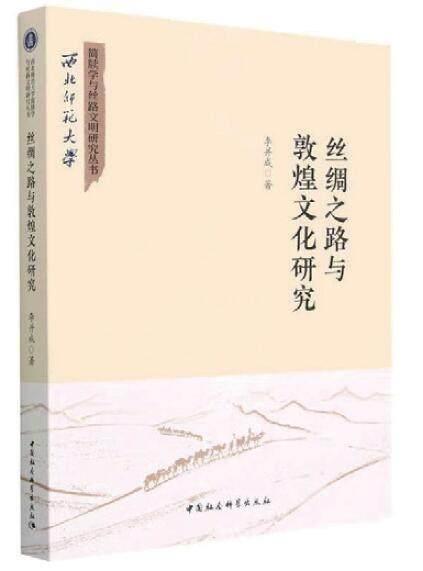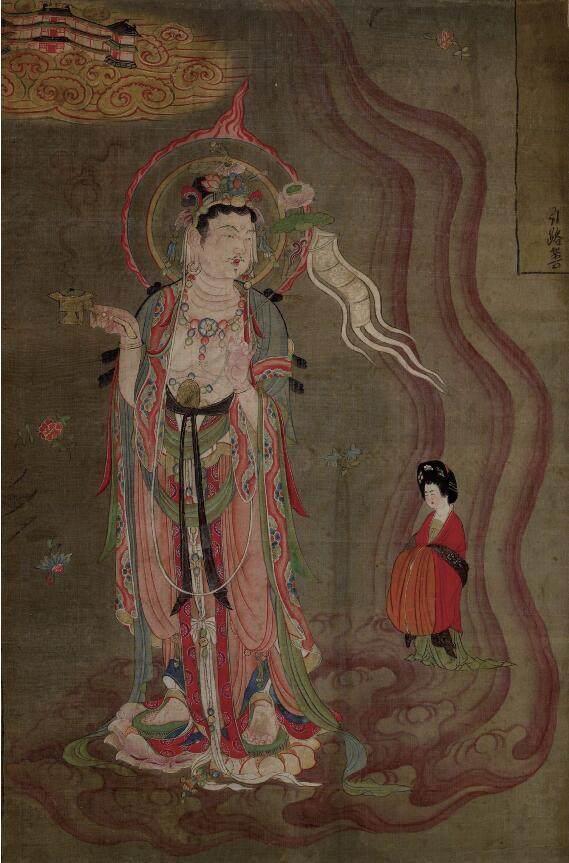Prioritize “Dunhuang Diplomacy” to Serve the Belt and Road Initiative



Research on the Silk Road and Dunhuang Culture
Li Bingcheng
China Social Sciences Press
May 2023
128.00 (CNY)
Li Bingcheng
Li Bingcheng is a researcher at Northwest Normal University, a doctoral supervisor, and a candidate for the first and second levels of the national “Millions of Talent Project.” He has been engaged in the teaching and research of Dunhuang Studies and Chinese Historical Geography for a long time.
“The foundation of international relations lies in the affinity between peoples, which in turn is rooted in heartfelt understanding.” Owing to Dunhuangs unique status on the Silk Road, along with the international, open, inclusive, and affable nature of Dunhuang culture and studies, Dunhuang is well-positioned and advantaged to act as a significant “diplomatic” medium and platform for awakening shared memories among the nations along the Belt and Road, enhancing the dialogue between civilizations and fostering a heartfelt connection among the peoples of our country and those of the countries along the routes. The author proposes the concept of “Dunhuang Diplomacy” to fully leverage this special and extremely important bridge of cultural exchange with the outside world to serve the joint construction of the Belt and Road Initiative. In light of this, we should have a sufficient understanding and take action.
I. The International Nature of Dunhuang Culture and the Significant Implications of “Dunhuang Diplomacy”
Firstly, the proposal of “Dunhuang Diplomacy” is primarily due to Dunhuangs historically unique and important position on the Silk Road. Dunhuang was the most crucial transportation hub on the ancient Silk Road and a major town where Eastern and Western cultures met, interacted, and integrated. It was one of the earliest and most important international cities in China. As the esteemed Sinologist Mr. Ji Xianlin stated, “There is only one place where the worlds four major cultural systems converge, and that is in Chinas Dunhuang and Xinjiang region; there is no second.” Therefore, Dunhuang boasts the most splendid cultural relics in human history, shining brightly like a pearl on the crown of human culture, becoming a globally renowned brand, hailed as “a sanctuary of culture, the Dunhuang of humanity.” Dunhuang is not only the city with the richest cultural heritage along the thousands of kilometers of the Silk Road, with the strongest foundation for cooperation, and the best representation of the Silk Road spirit and cultural essence, Dunhuang cultures influence on the progress of human civilization is also ever-renewing. Its internationality, inclusiveness, openness, affability, and cross-temporal innovation have made it an important medium and channel for cultural exchanges and dialogues between the East and West today, as well as for promoting Chinese culture abroad.
Secondly, the proposal of “Dunhuang Diplomacy” is also due to the international nature of Dunhuang materials themselves. Documents in languages like Western Xia script, Mongolian, Phags-pa, and Syriac were discovered in the northern area of the Mogao Caves. The Dunhuang manuscripts include a vast amount of Buddhist scriptures, as well as texts from Western religions such as Zoroastrianism, Manichaeism, and Nestorianism. Truly, they are all-encompassing and comprehensive.
Furthermore, the art of the Dunhuang grottoes (murals, sculptures, etc.) also possesses an international nature. As the esteemed scholar Mr. Jiang Liangfu once said: “It encompasses the essence of traditional Chinese art, as well as the brilliance that emerged from the contact between Eastern and Western arts, displaying high levels of technical skill, and the profound methods of assimilation and innovation, becoming one of the highest expressions in the realm of human thought. It summarizes the artistic creativity consciousness of China since prehistoric times and also assimilates the essence of Indian art, refining and expanding upon it to become the highest standard of the great Chinese tradition. It is the highest embodiment of the human spirit.”
For reasons mentioned above, Dunhuang materials are acclaimed as an “ocean of scholarship,” an “encyclopedia of the medieval period,” and the “library of the medieval world.”
Thirdly, the proposal of “Dunhuang Diplomacy” is also due to the international nature of Dunhuang studies. The birth of Dunhuang studies was marked by the discovery of the Scripture Cave in the Mogao Grottoes of Dunhuang in 1900. After the discovery of the Dunhuang manuscripts, they were looted by some foreign “explorers” and scattered abroad, which is a sorrowful chapter in Chinese academic and national history. However, objectively, it also played a role in stimulating the development of international Dunhuang studies. Since its inception, Dunhuang studies have attracted attention from scholars and countries worldwide. Besides China, Japan, France, the UK, Russia, the United States, South Korea, Germany, India, Denmark, Sweden, Norway, Canada, Singapore, Australia, the Czech Republic, Belgium, Hungary, and other countries have made significant contributions to Dunhuang studies or related fields, making it a globally recognized field of study. In September 1992, at the “International Conference on Dunhuang and Turpan Studies” held in Fangshan, Beijing, the renowned scholar and president of the Chinese Society for Dunhuang and Turpan Studies, Mr. Ji Xianlin, proposed that “Dunhuang is in China, but Dunhuang studies belong to the world.” This statement was highly endorsed by scholars from both China and abroad.
Fourthly, many significant topics within Dunhuang studies are highly compatible and consistent with research projects related to the Belt and Road Initiative. Dunhuang studies can be considered the most authoritative and outstanding representative in the academic system of the Silk Road, holding a unique advantage in “academic diplomacy.”
Fifthly, historical experience shows that cultural influence can transcend time and space, crossing national boundaries. Culture influences peoples thoughts and actions subtly and profoundly, and Dunhuang culture is a prime example of this. The internationality, inclusiveness, openness, affability, and cross-temporal creativity it embodies, as well as its role as an important channel and platform for awakening shared memories among nations along the Belt and Road, connecting the emotions of people from these nations, strengthening the dialogue between civilizations, expanding cultural exchanges, and fostering mutual understanding among peoples, are also crucial for enhancing the affinity and identification of people from countries along the route with Chinese culture, increasing the appeal of Chinese culture, strengthening Chinas international discourse power, and “telling Chinas story well,” “cultivating people through culture,” “promoting affection through culture,” and “building trust through culture.”
From the above content, it is clear that “Dunhuang Diplomacy” possesses a unique charm and significant meaning, holding a distinct advantage in serving the joint construction of the Belt and Road Initiative with great potential for achievement. How to fully leverage the advantages of Dunhuang culture and Dunhuang studies in this regard and to explore and unleash the potential of “Dunhuang Diplomacy” to better serve the Belt and Road Initiative is a significant issue that we cannot afford to ignore today.

